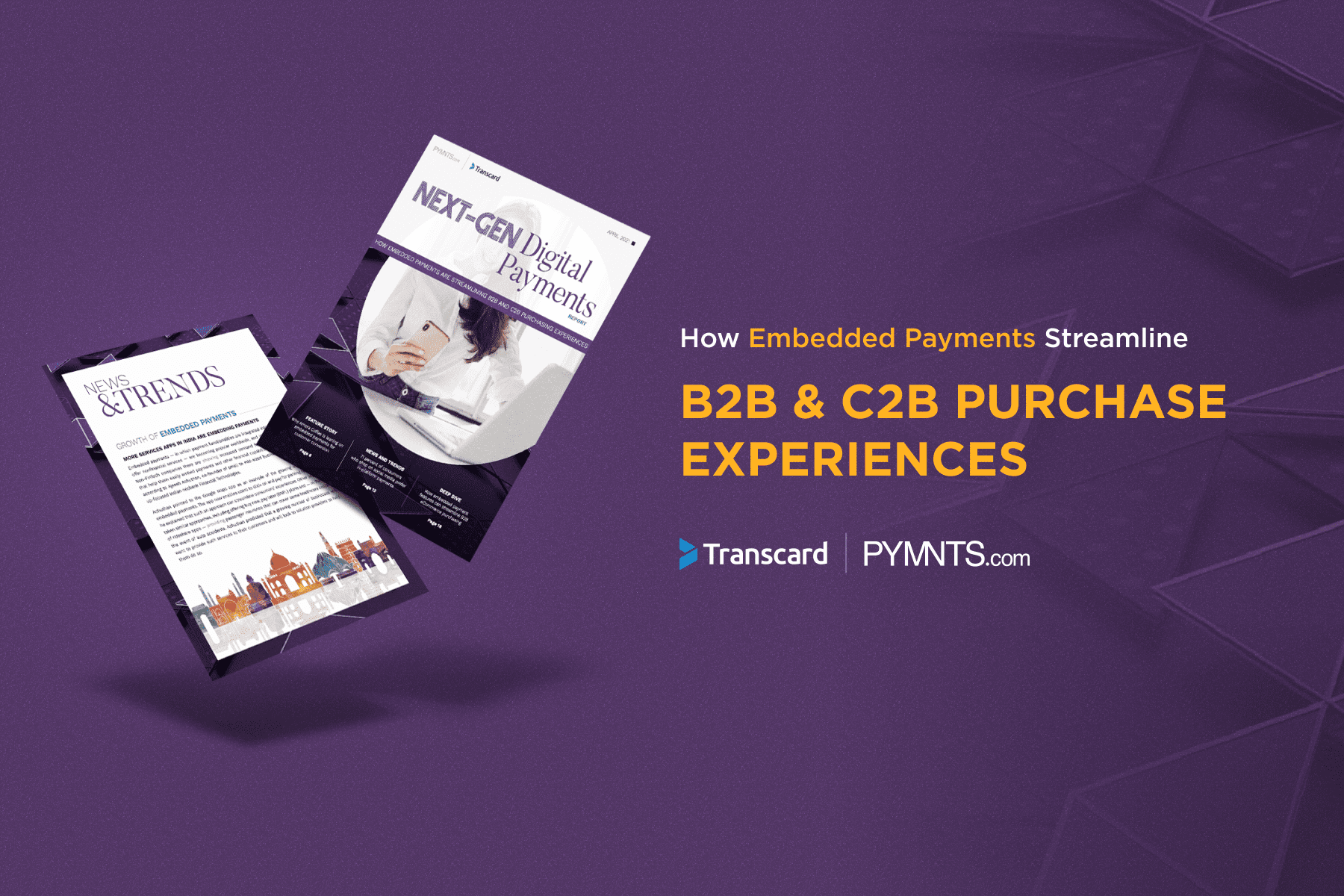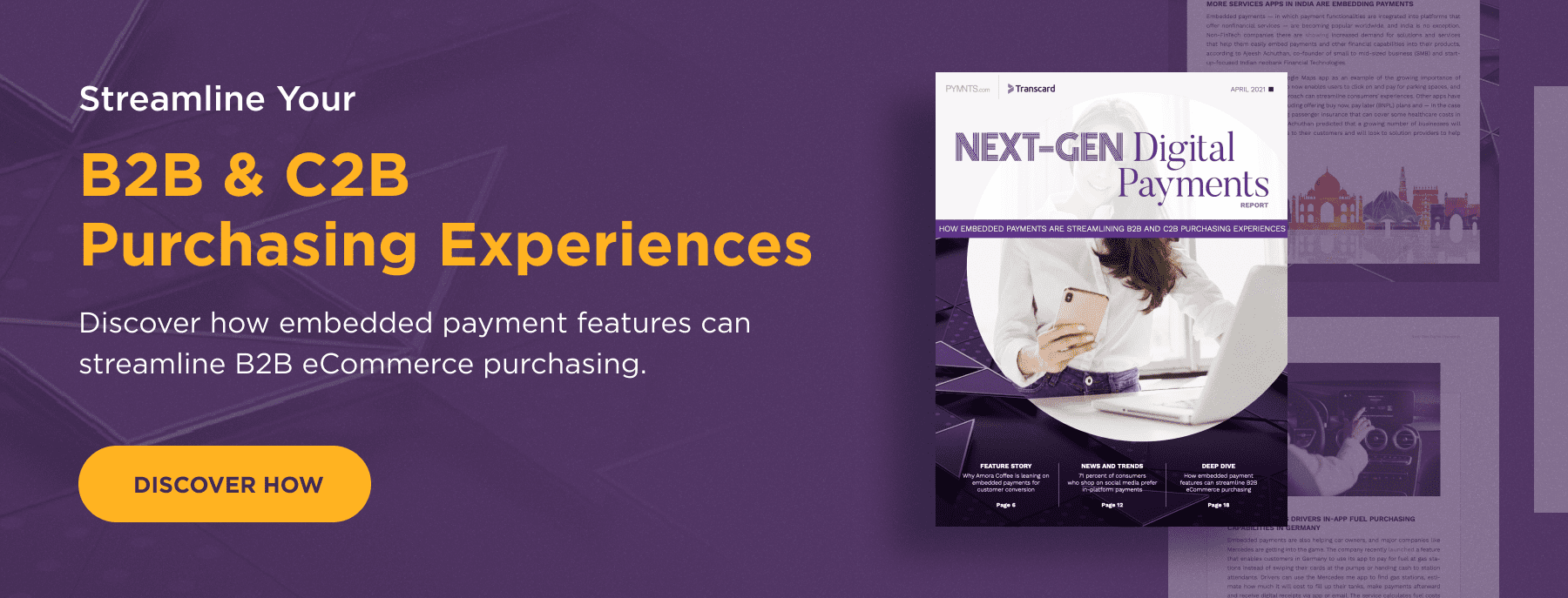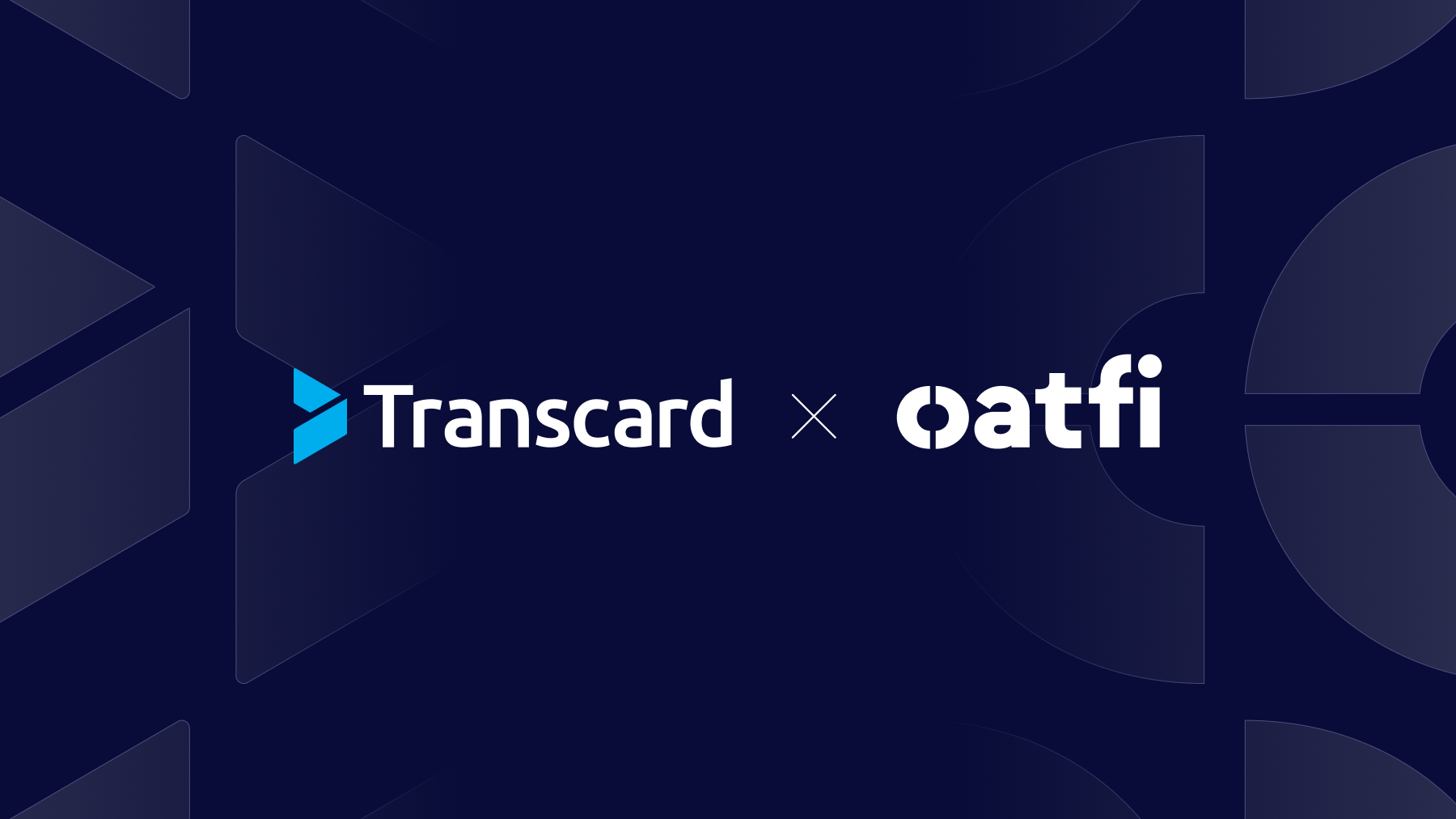B2B Organizations Fast-Track Transformation As Digital Payments Demand Intensifies
Consumers are enjoying manifold freedoms and benefits of the great digital shift, but business itself has some catching up to do, ironically, on the B2B side of the digital transformation.
Businesses Looking to Streamline Payment Experiences
In the April 2021 edition of PYMNTS’ Next-Gen Digital Payments Report, done in collaboration with Transcard, it’s noted that much like people using P2P apps,
“Corporate clients making purchases from (B2B) vendors similarly value straightforward, streamlined transaction experiences that can keep them from facing weeks-long, multi-step purchasing processes.”
It’s the opposite of traditional flows where corporate buyers:
- Placed orders
- Waited for supplier invoices
- Mailed paper checks
Or perhaps used an online payment method — assuming one was available and offered. That’s not always the case.
Disappointment and Inefficiency in the Old Ways
Mounting disenchantment with paper invoices/checks and snail mail is creating openings
“for vendors to offer clients embedded payments on their websites or sell via B2B eCommerce marketplaces that offer similar services. Recent studies illustrate the importance of providing online sales options for corporate customers, with one report finding that B2B sales made via digital channels rose 10% year over year to reach more than $9.9 trillion in 2020.”
The Next-Gen Digital Payments Report also notes that eProcurement solutions handled $2.2 trillion in sales in 2020, while a January 2021 survey found that 62% of B2B firms saw eCommerce sales rise by a minimum of 25% in 2020.
The Takeaway?
“Companies seeking to net more of these online sales must ensure that they have appealing checkout experiences to help them keep business clients satisfied” at a time when loyalties are being sorely tested.
Contextual and Embedded Get the B2B Nod
Zeroing in on how embedded, contextual payments are streamlining B2B purchasing in 2021, the new report features several use cases involving modernizing via this route.
Embedding Financial Solutions
For example,
“Banks may be able to generate critical revenue by helping non-FI third parties embed various financial offerings into their platforms,”
the report states, quoting Mike Ross Kane, CEO of embedded financial solutions firm Hydrogen, who recently wrote that:
“banks can expand their reach and generate more revenue by partnering with non-FI service providers to deliver payment services and financial products to their customers.”
Along with many others, Kane believes that digital banking’s ascendance during the pandemic is
“evidence that customers are becoming more interested in and familiar with digital financial services,”
observing trends like non-banks fielding financial tools
“Amazon now offers short-term lending to some of its marketplace sellers, for example, which indicates that businesses are more willing to turn to alternative sources to access financial offerings.”
Recent projections indicate that embedded payments could reach $7 trillion by 2030.
BaaS Is a Bright Spot for FIs and Non-Banks Alike
Also rising from the pandemic’s economic ashes is banking-as-a-service (BaaS) — another area of intense interest for corporates and their FI and FinTech partners.
Citing a recent survey of 8,500 international banking customers and 130 senior banking professionals, April’s Next-Gen Digital Payments Report acknowledges that 81% [of respondents] would drop their legacy bank or FI for alternatives that offered more flexible, convenient options.
BaaS solutions are near the top of that wish list, as are online and mobile banking platforms. Some 66% of FIs are using BaaS platforms, the report states, enabling non-bank partners to offer financial capabilities in their own channels, and another 25% [are] working to develop such solutions.
Collaborations that provide banking features on non-financial companies’ platforms could help both parties offer user-friendly and personalized services to consumers, per the report.
Ready to Streamline Your Purchasing Experience?
Discover the trends, technologies and key players that are bringing novel payment solutions to market.




